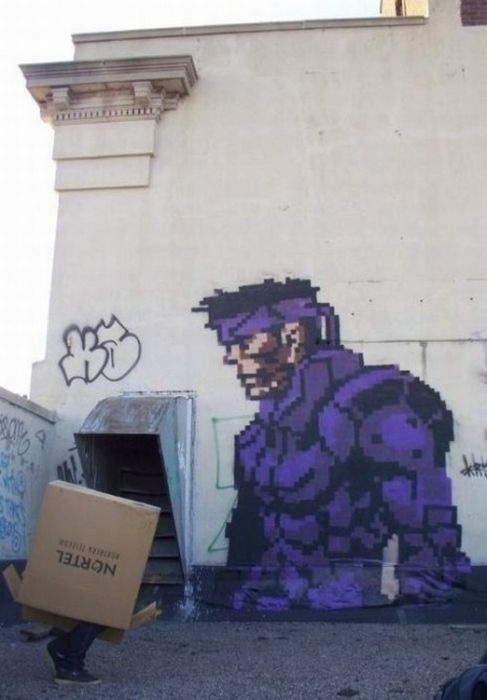|
|
Game Graffiti
|
On top of the political aspect of graffiti as a movement, political groups and individuals may also use graffiti as a tool to spread their point of view. This practice, due to its illegality, has generally become favored by groups excluded from the political mainstream (e.g. far-left or far-right groups) who justify their activity by pointing out that they do not have the money – or sometimes the desire – to buy advertising to get their message across, and that a "ruling class" or "establishment" control the mainstream press, systematically excluding the radical/alternative point of view. This type of graffiti can seem crude; for example fascist supporters often scrawl swastikas and other Nazi images.
One innovative form of graffiti that emerged in the UK in the 1970s was devised by the Money Liberation Front (MLF), essentially a loose affiliation of underground press writers such as the poet and playwright Heathcote Williams and magazine editor and playwright Jay Jeff Jones. They initiated the use of paper currency as a medium for counterculture propaganda, overprinting banknotes, usually with a John Bull printing set. Although short lived the MLF was representative of London's Ladbroke Grove centered alternative and literary community of the period. The area was also a scene of considerable anti-establishment and humorous street graffiti much of it also produced by Williams.
In 2009, following the elections in Iran, protesters (who regarded the electoral result as rigged) began to deface banknotes with slogans such as "Death to the dictator". In Colombia writing and drawing on banknotes has become increasingly popular, either to make political comments, for fun or as an artistic medium. The national government has run advertising campaigns in an attempt to discourage the practice. In the UK there have been signs of an MLF resurgence with a number of banknotes in circulation being over-marked with protest slogans such as "Banks=Robbers", relating to the perceived culpability of banks in the financial crisis.
Both sides of the conflict in Northern Ireland produce political graffiti. As well as slogans, Northern Irish political graffiti include large wall paintings, referred to as murals. Along with the flying of flags and the painting of kerb stones, the murals serve a territorial purpose, often associated with gang use. Artists paint them mostly on house gables or on the Peace Lines, high walls that separate different communities. The murals often develop over an extended period and tend to stylization, with a strong symbolic or iconographic content. Loyalist murals often refer to historical events dating from the war between James II and William III in the late 17th century, whereas Republican murals usually refer to the more recent troubles.
|
|









